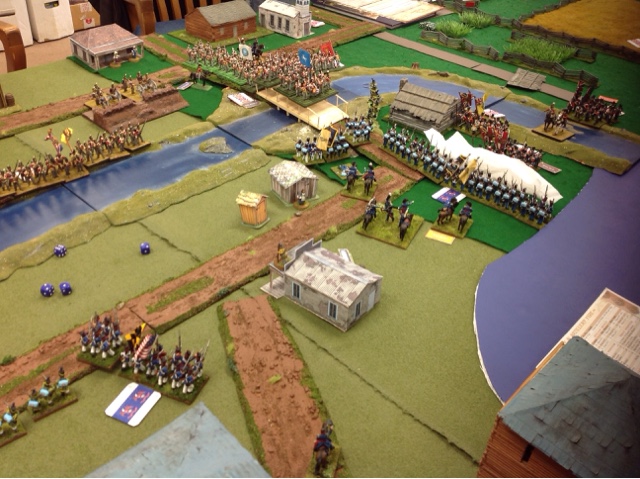The Lake Ontario Fleets in 1815
*For What If? Scenarios
I have found the information I was missing on the ships under construction at;
http://www.napoleon-series.org/military/Warof1812/2015/Issue24/NewOrleansClass.pdf
So here is what Lake Ontario would have looked like if the war had continued into 1815.
I'm including the length of gun deck and "Tonnes burthen" for each. Tonnes burthen tells how much each ship can carry; basically the volume of the ship.
British
Captain Edward Owen
Broadside Weight Up to June; 5157 Tonnes
Tonnes Burthen; 6232 t
Broadside Weight Late June On; 8133 Tonnes
Tonnes Burthen; 10 536
St. Lawrence 108 Guns; 1st Rate Ship of the Line
191 feet, 2305 t
2 68 pound carronades, 34 32 pound carronades, 34 24 pound long guns, 34 32 pound long guns
Wolfe 108 Guns (Est. June); 1st Rate Ship of the Line
191 feet, 2152 t
36 32 pound carronades, 76 24 pounders
Canada 108 Guns (Est. June); 1st Rate Ship of the Line
191 feet, 2152 t
36 32 pound carronades, 76 24 pounders
Prince Regent 58 Guns; Large 4th Rate Frigate
155 feet, 1293 t
*a razed third rate; Leander Class
4 68 pound carronades, 24 32 pound carronades, 28 24 pounders,
Psyche 56 Guns; 4th Rate Frigate
130 feet, 769 t
28 32 pound carronades, 28 24 pounders
Princess Charlotte 42 Guns; Large 5th Rate Frigate
121 feet, 755 t
2 68 pound carronades, 16 32 pound carronades, 24 24 pounders
Montreal / Wolfe 23 Guns; 6th Rate Frigate
101 feet, 426 t
4 68 pound carronades, 8 32 pound carronades, 1 24 pounder (pivot), 8 18 pounders
Niagara / Royal George 21 Guns; 6th Rate Frigate
96 feet, 330 t
18 32 pound carronades, 1 24 pounder (pivot), 2 18 pounders
Star / Lord Melville 14 Guns; Sloop / Brig
71 feet, 186 t
12 32 pound carronades, 2 18 pounders
Charwell / Earl of Moira 13 Guns; Sloop / Brig
70 feet, 168 t
12 24 pound carronades, 1 18 pounder (pivot)
Netley / Beresford 11 Guns; Sloop / Brig
72 feet, 142 t
10 18 pound carronades, 1 24 pounder (pivot)
American
Commodore Isaac Chauncey
Broadside Weight Up To April; 2740 Tonnes
TonnesBurthen; 5965 t
Broadside Weight To Mid May; 4508 Tonnes
Tonnes Burthen; 8908 t
Broadside Weight May On; 7362 Tonnes
Tonnes Burthen; 13 431
New Orleans 106 Guns (Est. Early April); 1st Rate Ship of the Line
204 feet, 2948 t
28 43 pound carronades, 70 32 pounders, 8 24 pounders
Chippewa 106 Guns (Est. May 15th); 1st Rate Ship of the Line
204 feet, 2948 t
28 43 pound carronades, 70 32 pounders, 8 24 pounders
Plattsburgh 56 Guns (Est. May 15th); Very Large 4th Rate
180 feet, 1580 t (based on Superior)
26 42 pound carronades, 30 32 pounders, 2 24 pounders
Superior 58 Guns; Very Large 4th Rate
180 feet, 1580 t
*this ship was the size of a razed 2nd rate or large 3rd rate
26 42 pound carronades, 30 32 pounders, 2 24 pounders
Mohawk 42 Guns; Large 5th Rate
155 feet, 1350 t
*the size of a razed third rate
16 32 pound carronades, 26 24 pounders
General Pike 26 Gun; Large 6th Rate
145 feet, 875 t
*razed 4th rate
24 24 pounders, 2 24 pounders (pivots)
Madison 23 Guns; 6th Rate
112 feet, 580 t
8 32 pound carronades, 14 18 pounders, 1 18 pounder (pivot)
Jones 20 Guns; 6th Rate
117 feet, 509 t
*Overgunned and unstable
16 42 pound carronades, 4 24 pounders
Jefferson 20 Guns; 6th Rate
117 feet, 509 t
*Overgunned and unstable
16 42 pound carronades, 4 24 pounders
Oneida 18 Guns; Sloop / Brig
85 feet, 262 t
16 24 pound carronades, 2 6 pounders
Sylph 16 Guns; Sloop / Brig
65 feet, 300 t?
14 24 pound carronades, 2 9 pounders
Situation by June of 1815
British
Broadside Weight; 8133 Tonnes
Tonnes Burthen; 10 536
Average Janka Hardness 1320 lbf
3 1st Rate Ships
1 Large 4th Rate Ship (razed third rate)
1 4th Rate Ship
1 Large 5th Rate Ship
2 6th Rate Ships
3 Brigs / Sloops
Americans
Broadside Weight 1815; 7362 Tonnes
Tonnes Burthen; 13 431
Average Janka Hardness; 1000 lbf
2 1st Rate Ships
2 Very Large 4th Rate Ships (razed second/third rate)
1 Large 5th Rate Ship (razed third rate)
1 Large 6th Rate Ship
1 Large 6th Rate Ship
3 6th Rate Ships
2 Brigs / Sloops
British; 551 Guns, 11 Ships
3 Large, 3 Medium, 5 Small
Americans; 495 Guns, 11 Ships
2 Large, 3 Medium, 6 Small
Broadside Weight; British +10%
Tonnes Berthen; Americans +22%
Wood Hardness; British +32%
Both sides were lead pretty well on Ontario. They both looked for a fight when they knew they were stronger, and wisely avoided fighting when they were weaker. The American Frigates were blockaded for the most part so crew and cannons were sent to the Great Lakes for the fleet there. The British also had a lot of Ocean going crew, marines and officers on Lake Ontario by the end of the war.





































